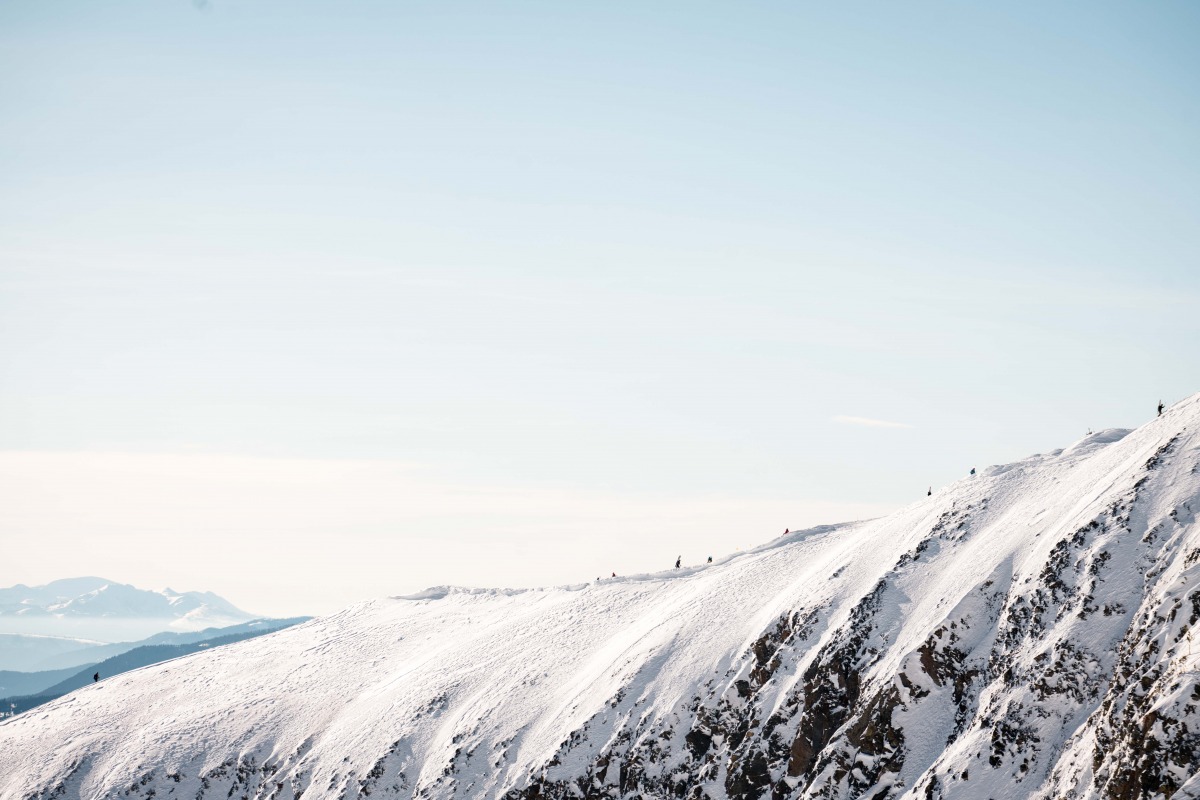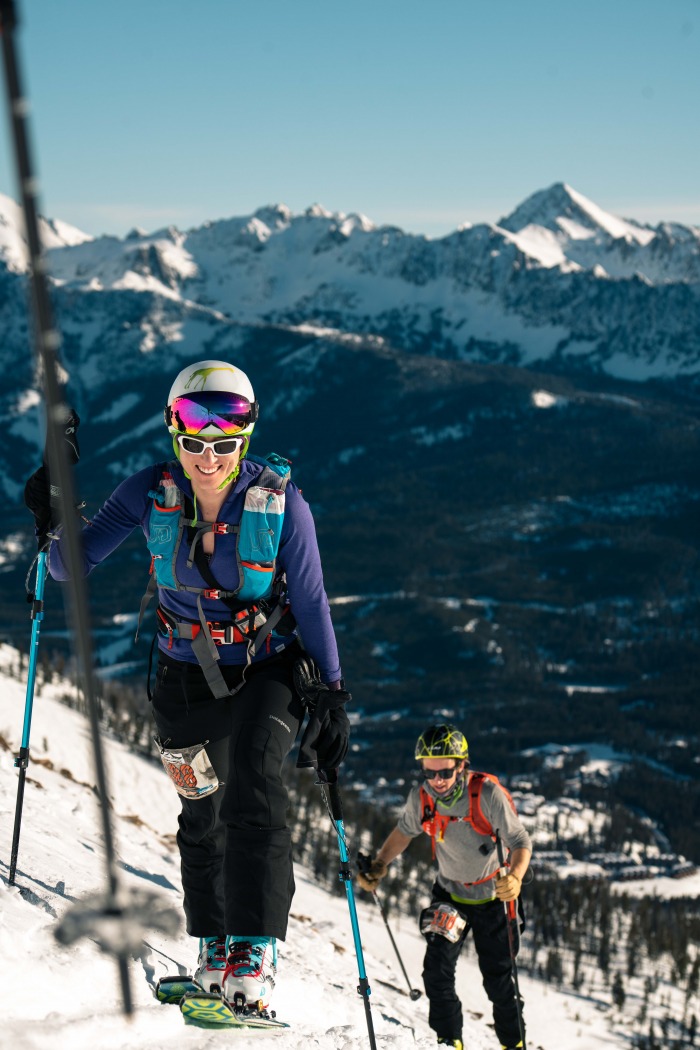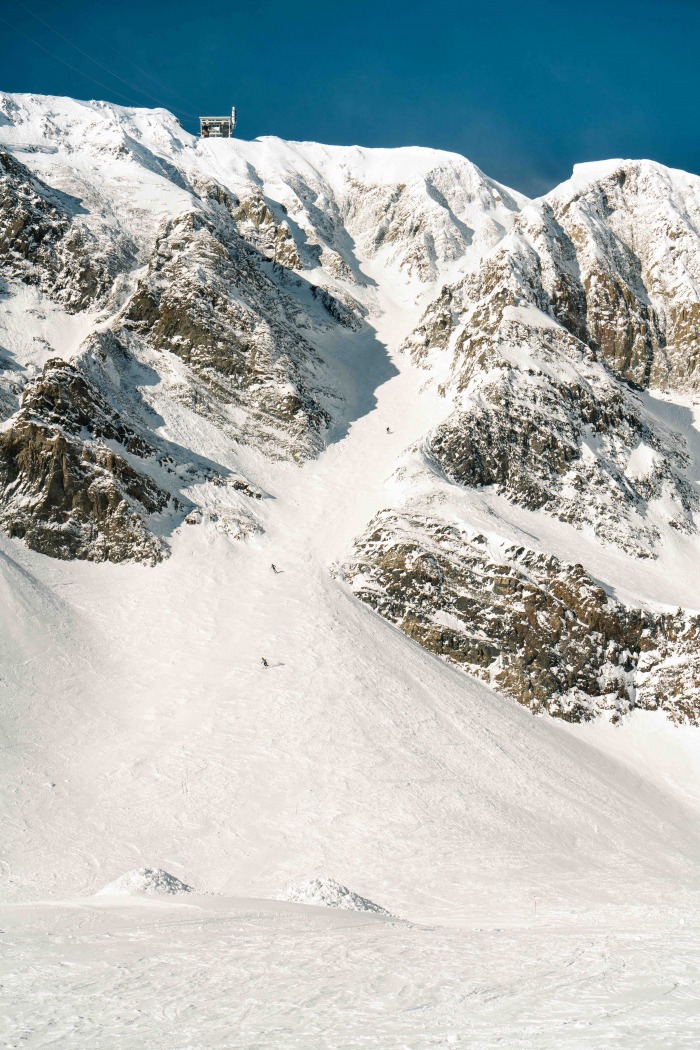
Racing in Montana, and here at the Shedhorn, involves big views and big vert. Photo: Anthony Pavkovich.
Steep, spring skiing season is here after another dry winter passes under the big sky. Looking up from the brown fields to the still-white mountains, it’s hard to believe skimo racing is over, but with Big Sky’s Shedhorn complete and the Big Couloir styled, most Montana racers have hung up their spandex. After a year of unprecedented community support, skimo has grown, and the first-ever statewide skimo series across Montana is wrapped.
While Montana is an established powder skiing and backcountry paradise, the skimo racing scene in the Big Sky State has steadily gained momentum. Individual races like Big Sky Resort’s Shedhorn and Whitefish Mountain’s Whiteout have long been the face of Montana skimo. However, smaller and less intimidating community races are popping up throughout the state.
This year, during four weekends in February and early March, nearly 200 racers converged at races up and down the spine of the Rockies during the inaugural year of the Big Sky Skimo Cup. Missoula’s Marshall Mountain hosted community-friendly vertical and sprint races, Whitefish held a lung-searing individual race outside of Glacier National Park, Choteau welcomed racers to steep booters and big powder fields during their individual race, and Big Sky hosted a relentless vertical before the series finale, their famously steep individual event.

The four race Big Ski Skimo Cup was organized at mom and pop ski hills and giants like Big Sky. Photo: Anthony Pavkovich.
According to Matt Madsen, who led the charge organizing these events, the cup finally gives people from such a vast state the opportunity to come together and compete. He sees the statewide series as a way to draw skiers together from city hills, small mom and pop resorts, and corporate behemoths.
As the event promoter for Bozeman’s Uphill Pursuits, he’s been instrumental in encouraging the diverse Montana skimo scene to organize while remaining welcoming and inviting. “We have to make it fun and keep it from becoming intimidating,” said Madsen.
Madsen, who started racing in the Colorado scene, wants to see Montana better represented nationally in the recently adopted Olympic sport. “The cup brings more legitimacy to Montana skimo,” said Madsen.
While Montana may not be traditionally known for a surplus of spandex-clad racers and carbon boots, most competitors are still rocking touring gear while braving the rec or pro division. Community series are popping up in the larger cities – providing a developmental pathway for those interested in pursuing the sport at a higher level, and those looking for a fun scene. From a competitive perspective, the state has produced talent over the years; former national class racers Mike Foote and Michela Adrian call Montana home.
Adrian, who currently coaches youth skimo in Bozeman, says that it’s important for the sport’s growth to see more focus turn towards local events. She’s been encouraging her racers to show up for a weekly Wednesday night series in Bozeman and the statewide cup. “Grassroots stuff like this makes or breaks the community,” said Adrian.
In addition to her coaching, Adrian is still racing hard and podiumed at this year’s Shedhorn in the individual. She’s proud of what the state offers and thinks other racers should come to Montana because “races here have a raw feel” and “are some of the most technical in the country.” She’s thrilled to see so much enthusiasm growing for the sport and a community dedicated to racing. “The majority of skiers that race in Montana are backcountry skiers that are just in good shape,” said Adrian.
This growth was a cause to celebrate at Teton Pass Ski Area on the third race weekend of the series. At the edge of the northern Montana prairie, this quaint and unpretentious hill with low-key vibes is tucked in the steep reefs guarding the Bob Marshall wilderness. Hours from the more famous ski destinations in the state, over 140 racers attended the event, doubling the previous year’s attendance. The turnout was on par with Whitefish’s Whiteout and far eclipsed the more well-known Shedhorn— a significant success for the race organizers and a nod to how far the sport has come.

Big drops during the Shedhorn. Photo: Anthony Pavkovich.
The enthusiasm seen at Teton Pass is also felt across the state in Missoula. According to Shaun Radley, who directed the first two races of the cup, he’s given the business side of skimo a lot of thought and carries both high-end skimo and light backcountry gear in his shop, MTCX. “The growth in the sport is on the recreational end, not the lightweight, European style,” said Radley.
His races were held at a tiny, nearly in town ski area that may soon be acquired by the city of Missoula. Marshall Mountain is a great asset, providing public access and a quick tour just 15 minutes from downtown Missoula. Like most skimo races, there was plenty of spandex, but racers also came carrying powder skis or wearing jorts. As a veteran organizer of bike racing events, Radley thinks the progression from ski touring to racing is a big jump. With that in mind, he kept the race short, made sure the music was rocking, and had lots of brats and beer at the finish line. “The more the racers are relaxed, then we’ll continue to get more people involved,” he said.
One of the major struggles for continued growth is that uphill travel access, like Missoulians can find at Marshall, is a rarity in the state. That is a deterrent for training highly competitive athletes, but it’s also hard to convince backcountry skiers to give skimo a try.
Radley said Marshall was an easy venue to permit, but getting his larger, local ski area, Snowbowl, to host a weekend event would change the Montana Skimo landscape. Radley admits it’s not all that important to have small venues like Marshall as part of the series. “It’s more important to have Shedhorn, because we need the ski industry to recognize uphill traffic,” he said.
The next challenge —the proliferation of allowable uphilling at resorts—is something the Big Sky Skimo Cup is poised to help tackle by showing the need, growing number of users, and building community support across the state.
